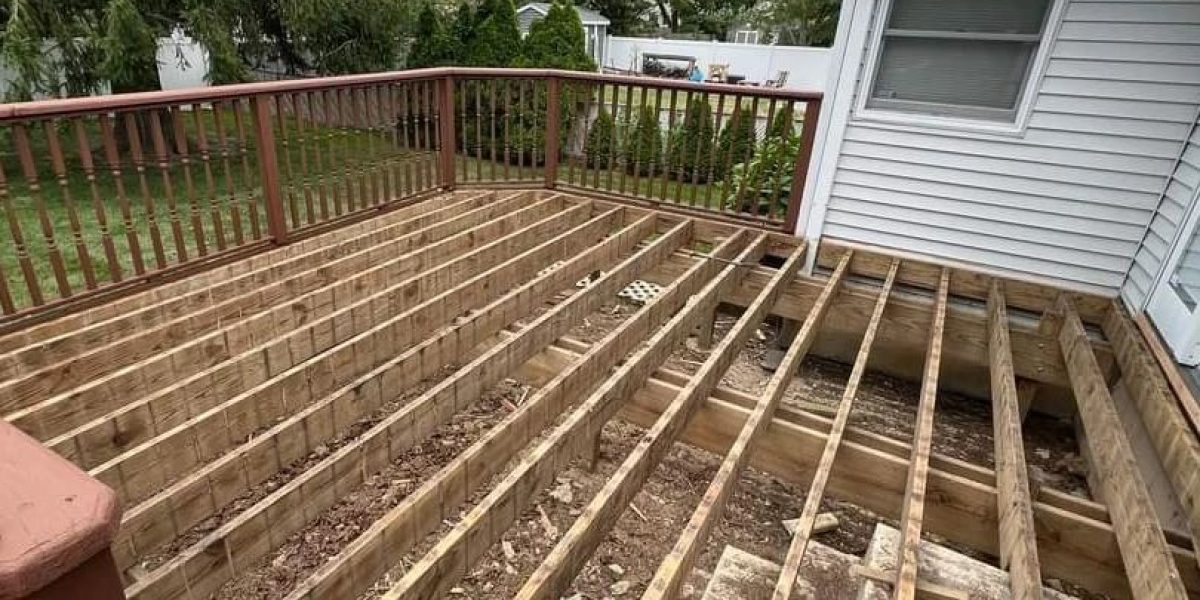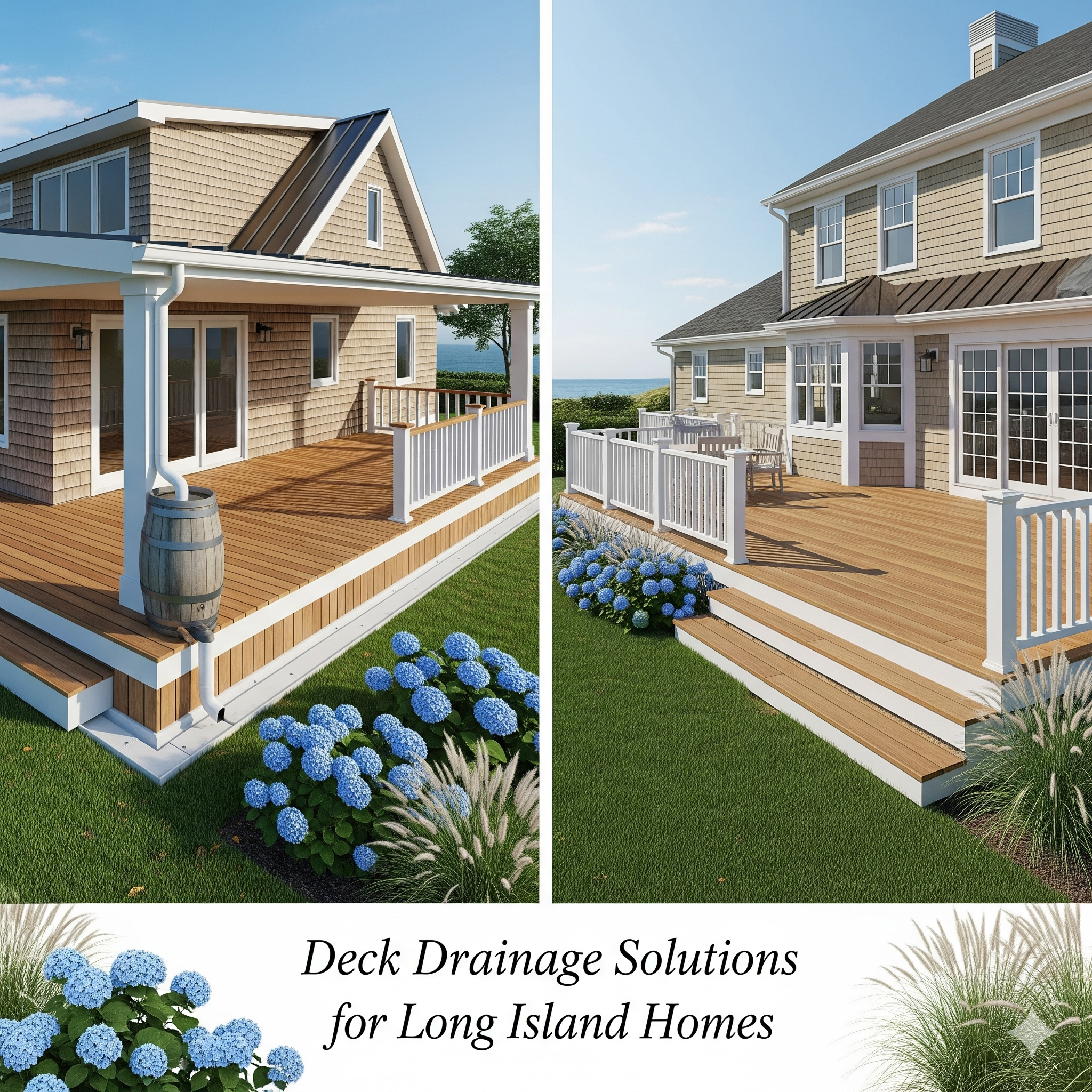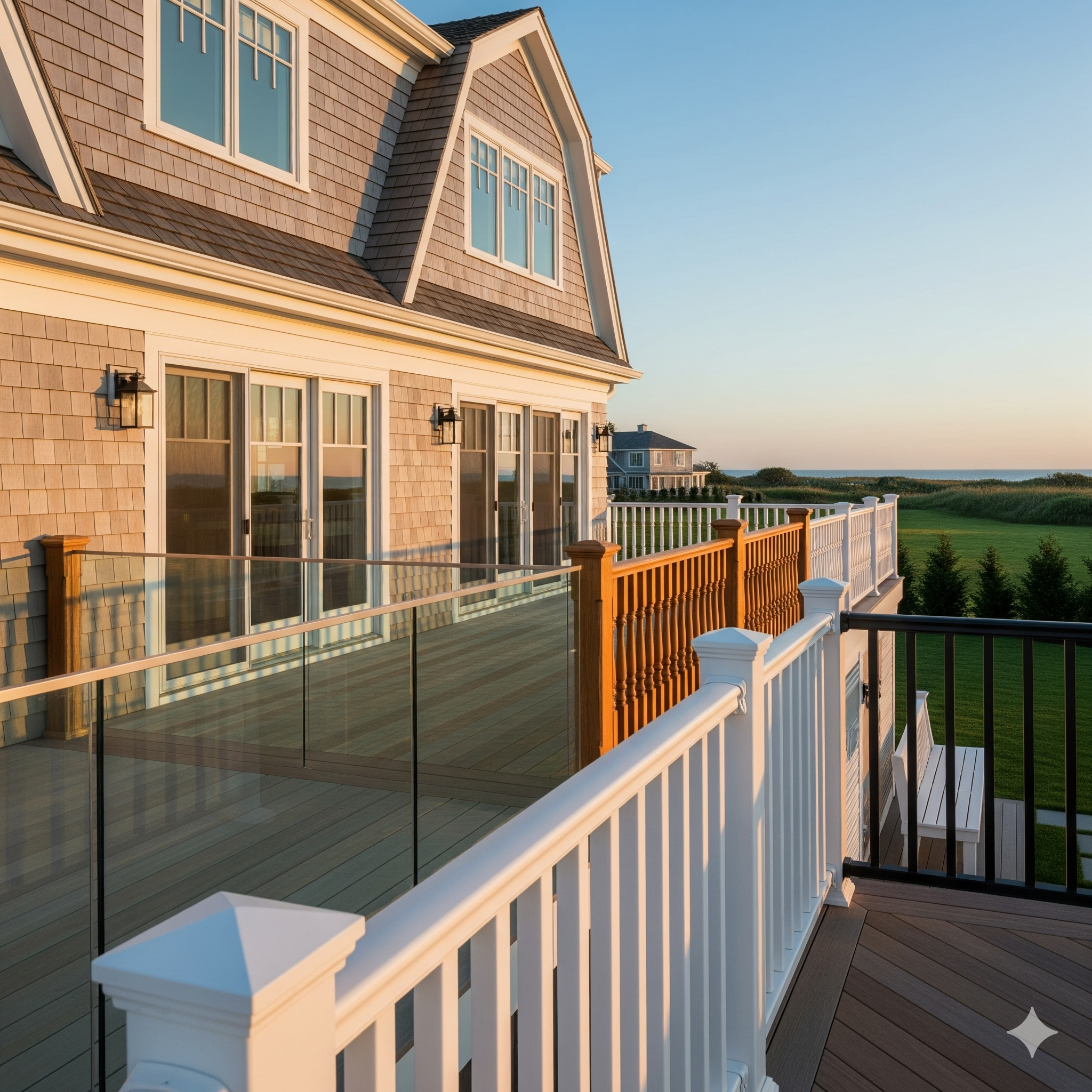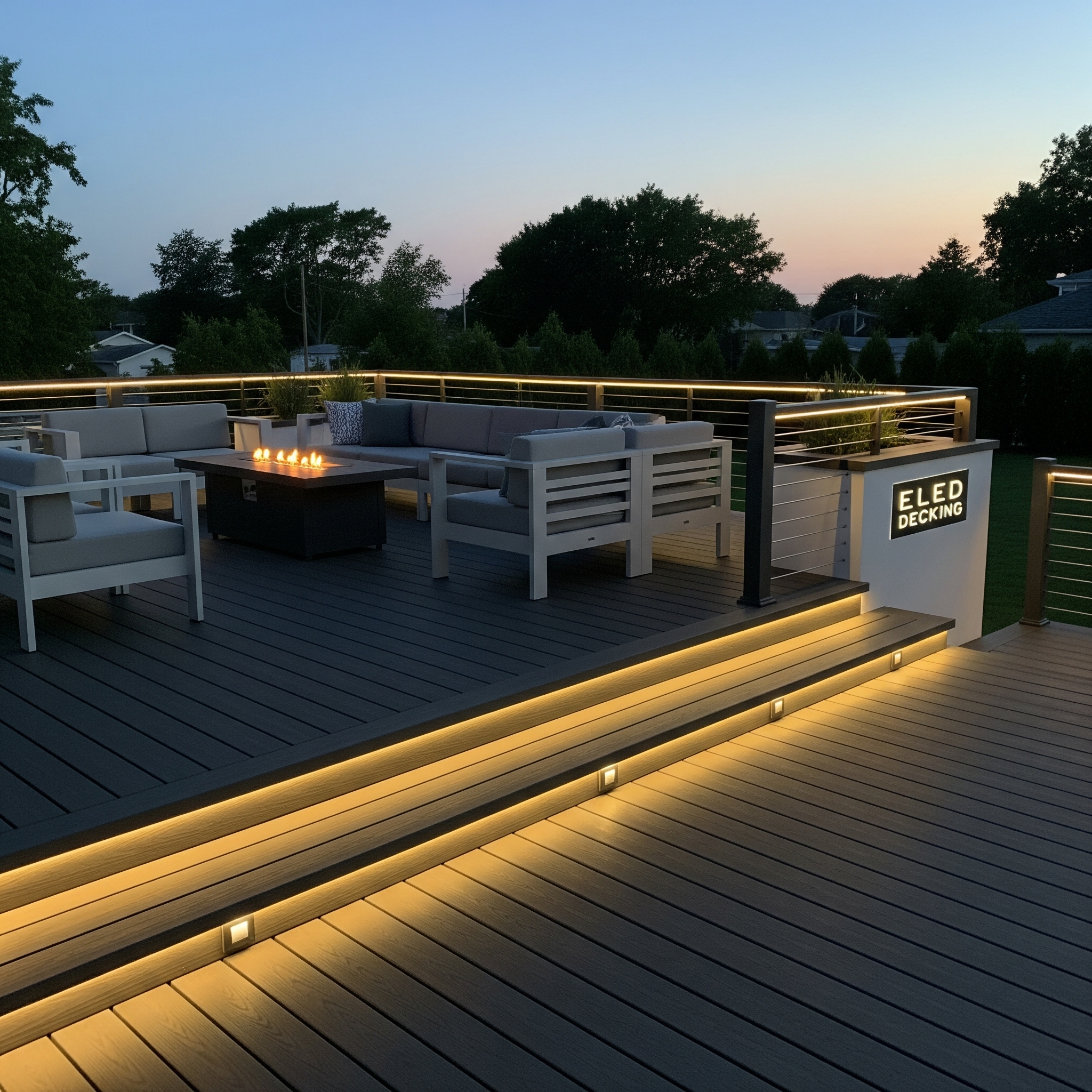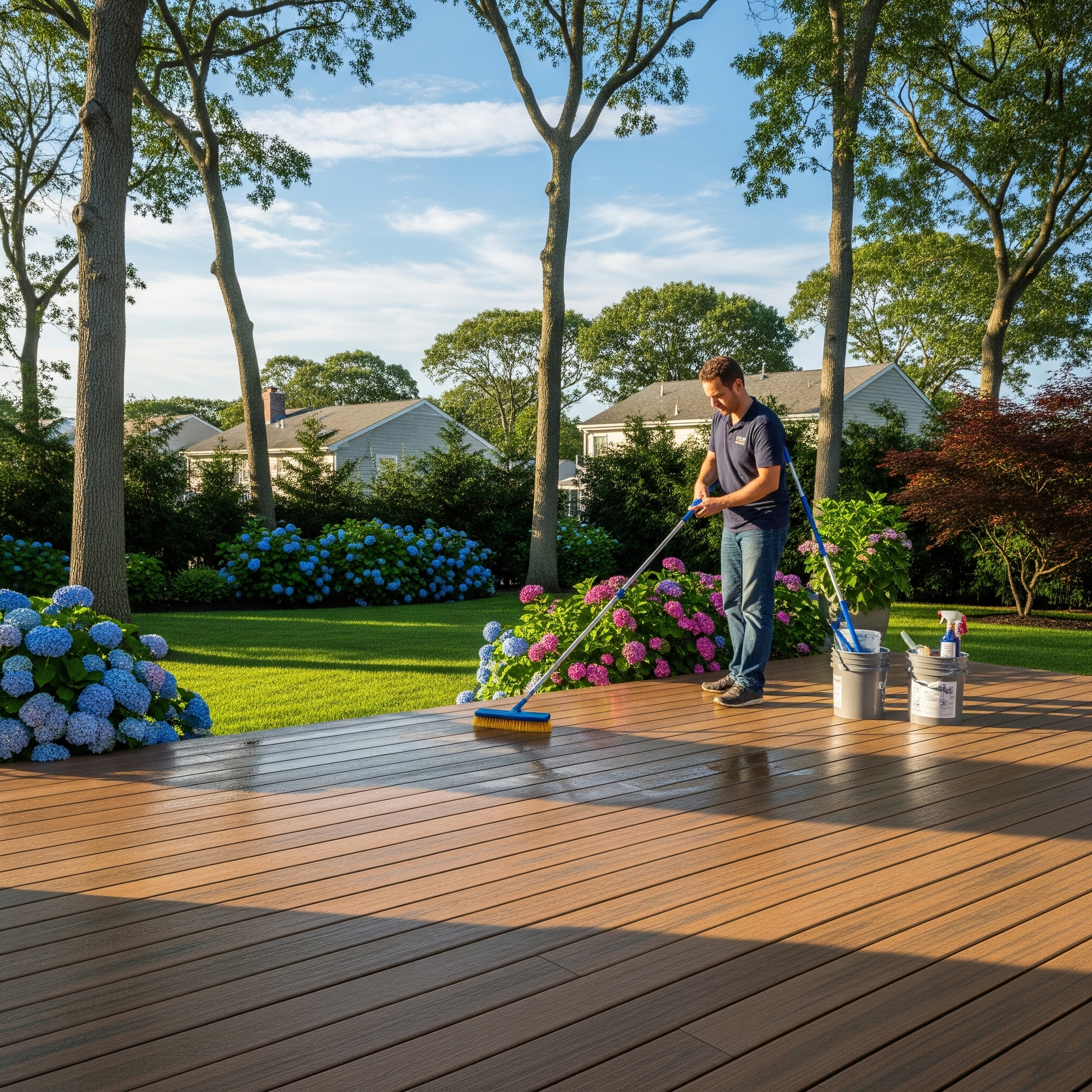Why Deck Maintenance is Crucial
Your deck faces year-round exposure to rain, sunlight, and temperature changes, all of which take their toll over time. Regular maintenance can help you avoid costly repairs and even prevent potential accidents. Think of it as routine care for a car—ignore it too long, and things will start to break down.
Sign #1: Wood is Rotting or Decayed
Understanding Wood Rot
Wood rot is one of the most serious issues you can encounter with a deck. It happens when moisture gets into the wood, breaking it down over time. If left unchecked, rot can spread, weakening the deck’s structure.
What Causes Wood Decay?
Moisture, combined with poor ventilation, leads to rot. Often, this problem occurs in shaded areas or spots where water pools after rain. If you notice soft or crumbly wood, it’s a sign that rot has set in, and immediate action is required.
Sign #2: Boards are Cracking or Splitting
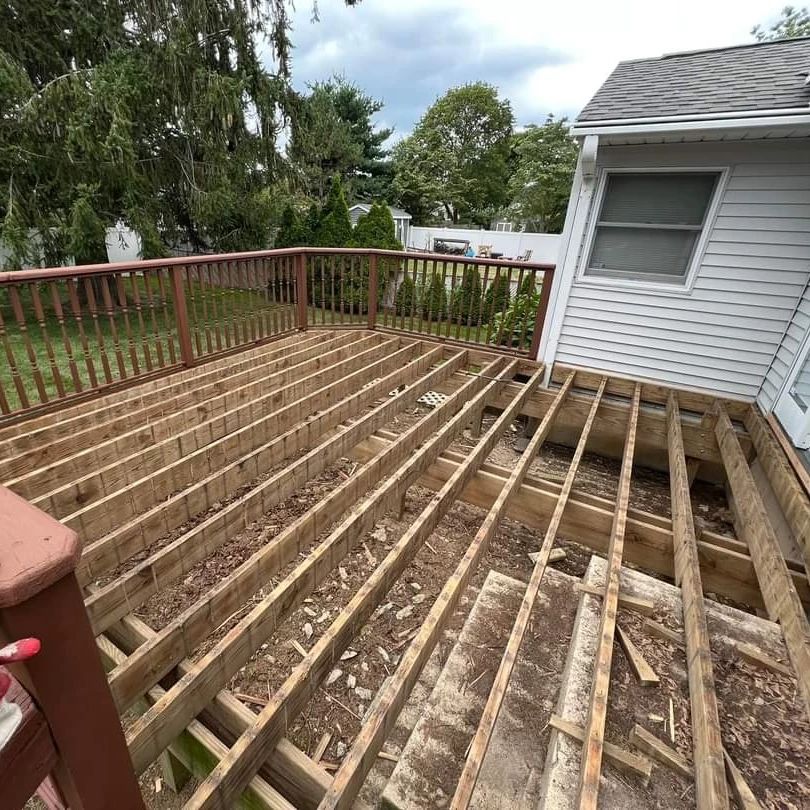
Structural Impact of Cracked Boards
Over time, wood naturally expands and contracts due to temperature changes. This can cause cracks or splits in the deck boards. While a small crack may seem harmless, it can quickly turn into a larger issue, compromising the deck’s structural integrity.
How to Assess Minor vs. Major Cracks
Not all cracks are created equal. If a crack is minor and hasn’t gone through the entire board, it might just need a simple sealant. However, deep cracks that stretch across multiple boards could signal that the wood is no longer sound.
Sign #3: Wobbly Railings
Safety Risks of Unstable Railings
One of the most overlooked signs of a deck needing repair is a wobbly railing. Railings are there to keep you safe, and if they’re loose, it poses a significant fall risk—especially if you have small children or older family members.
Simple Fixes vs. Full Replacement
In some cases, tightening screws or replacing a few fasteners may be enough to fix the problem. But if the railing posts themselves are deteriorating, a complete replacement may be in order to ensure the deck’s safety.
Sign #4: Loose or Rusted Nails and Fasteners

The Danger of Loose Fasteners
Loose or popped nails are more than just an eyesore. They can trip people up and even cause the deck to become unstable. Walking on a deck with loose nails is not only uncomfortable but also hazardous.
When Rust is a Sign of Larger Issues
If you notice rust on your deck’s fasteners, it’s a sign that the metal components are corroding. This could lead to weakened joints, making the deck less sturdy. Rust often points to a bigger issue with moisture penetration, which should be addressed quickly.
Sign #5: Mold, Mildew, and Water Damage
How Moisture Harms Your Deck
Mold and mildew are not only unattractive, but they also indicate that water is seeping into your deck’s wood. If you notice green or black spots forming, it’s essential to clean them up right away. However, if the water damage is extensive, it could be time for a repair—or even a replacement.
Removing Mold vs. Replacing Damaged Wood
While some mold can be scrubbed away, persistent water damage could mean the wood underneath has begun to deteriorate. In that case, replacing those sections of your deck is often the best course of action.
Sign #6: Sagging or Bouncy Decking
What Causes Deck Sagging
A sagging deck is a serious issue that often results from the posts or joists beneath the deck becoming weakened. Moisture, rot, and even termites can cause these structural elements to fail over time.
Is It Time for a Full Replacement?
If your deck is visibly sagging or feels bouncy when you walk on it, it may be more cost-effective to replace the entire structure rather than patch up individual areas. A sagging deck is usually a sign that the foundational elements are compromised.
Sign #7: Age of the Deck
How Long Should a Deck Last?
Most decks, if properly maintained, can last anywhere from 10 to 20 years. However, the lifespan can vary based on the materials used and the local climate.
Signs It’s Simply Too Old
If your deck is over 15 years old, it may be time to consider a replacement. Older decks tend to have accumulated various small problems over the years, and these can add up to one major issue that requires a full overhaul.
Repair vs. Replace: How to Decide
Cost Analysis
The cost of repairing a deck versus replacing it depends on the extent of the damage. Minor repairs may be more affordable, but if multiple issues are present, it might make more sense financially to replace the entire deck.
Long-Term Durability
If your deck has significant structural damage, replacing it ensures longer-term durability. It’s better to invest in a new, sturdy deck now rather than continuously patching up an old one.
Deck Maintenance Tips to Prolong Lifespan
To avoid major repairs or replacements, consider regular maintenance such as cleaning your deck yearly, resealing it to prevent water damage, and inspecting it for any early signs of decay or structural problems.
Conclusion
Your deck is a valuable extension of your home, and keeping it in top condition is essential for both safety and enjoyment. By watching out for these 7 signs—wood rot, cracks, wobbly railings, loose fasteners, mold, sagging, and age—you’ll be able to decide whether repairs or a full replacement are needed. Don’t wait until it’s too late; take action to ensure your deck is safe and ready for all those special moments.
FAQs
- How often should I inspect my deck?
You should inspect your deck at least once a year, ideally in spring, after the winter months have taken their toll. - Can I repair my deck myself?
Minor repairs, like tightening screws or replacing individual boards, can often be done yourself. However, structural issues should be handled by a professional. - What is the average lifespan of a wooden deck?
With proper care, a wooden deck can last between 10 to 20 years. - How can I prevent wood rot on my deck?
Regularly clean your deck, apply a waterproof sealant, and ensure there is adequate drainage to prevent water from pooling. - Is it cheaper to repair or replace a deck?
Small repairs are usually more affordable, but if your deck has multiple issues, a replacement may be more cost-effective in the long run.
Hire a Deck Contractor in Long Island
If your deck shows any of these signs, it’s time to call in the professionals. ELED Decking offers expert deck repair and replacement services across all of Long Island, including East Hampton. Don’t risk your safety or the value of your home with a damaged deck. Contact the experts today to get a free estimate and ensure your outdoor space is in top shape for years to come.
Email: [email protected]
Phone: (631) 552-6884
